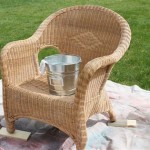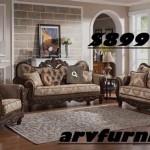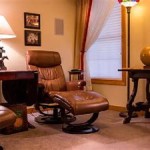How to Repair Furniture Veneer
Furniture veneer, a thin layer of wood adhered to a substrate, offers an economical way to achieve the aesthetic appeal of solid wood. While durable, veneer is susceptible to damage from moisture, impact, and age. Recognizing the common problems and understanding the appropriate repair techniques are crucial for maintaining the beauty and integrity of veneered furniture. This article provides a comprehensive guide on how to address various types of veneer damage, ensuring successful and long-lasting repairs.
Before initiating any repair, a thorough assessment of the damage is essential. This involves identifying the type of damage, the extent of the affected area, and the type of veneer used. Common types of veneer damage include loose veneer, bubbling or blistering, chips and cracks, and staining or discoloration. Properly identifying these issues will dictate the repair strategy employed.
Identifying Common Veneer Problems
Effective veneer repair starts with the accurate identification of the issues present. Ignoring the true nature of the damage can lead to further complications and a less than satisfactory final outcome. The following are some of the most frequently encountered veneer problems:
Loose Veneer: This is perhaps the most common issue. Loose veneer can manifest as a small section lifting at the edge or a larger area detaching entirely. The underlying cause is typically a weakening or failure of the adhesive due to age, moisture exposure, or physical stress. Identifying the extent of the looseness is critical for determining the amount of adhesive needed during the repair.
Bubbling or Blistering: Bubbles or blisters form when the veneer separates from the substrate in a localized area. This often appears as raised pockets underneath the veneer surface. Moisture is a frequent culprit, causing the adhesive to swell and lose its bond. In some cases, heat can also contribute to this issue.
Chips and Cracks: Veneer, being thin, is vulnerable to chipping and cracking, especially along edges and corners. Impacts, accidental scrapes, and even the natural movement of the wood substrate can cause these imperfections. The severity of the damage can range from minor surface imperfections to significant material loss.
Staining or Discoloration: Water damage, sunlight exposure, and spills can cause staining or discoloration of the veneer. These blemishes can detract from the overall appearance of the furniture. Determining the source and depth of the stain is important for selecting the appropriate cleaning or bleaching method.
Delamination: With layered veneers, delamination can occur, meaning the layers of veneer separate from each other. This is often caused by moisture or impact damage and requires careful attention to repair, as it involves multiple layers of adhesive failure.
Repairing Loose Veneer and Bubbles
Addressing loose veneer and bubbles requires careful application of adhesive and controlled pressure. The following steps outline the process:
Preparation: Begin by cleaning the affected area with a soft cloth and mild soap. Remove any loose debris or old adhesive. Ensure both the underside of the veneer and the substrate are clean and dry.
Adhesive Application: Select a suitable wood glue specifically designed for veneer repair. Yellow carpenters glue is a good choice for many situations. Inject the adhesive beneath the loose veneer or into the bubble using a syringe or a thin spatula. Be careful not to apply too much adhesive, as excess glue can squeeze out and complicate the cleanup process.
Clamping and Pressure: Once the adhesive is applied, carefully press the veneer back into place. Use a veneer scraper or a smooth, flat piece of wood to ensure even contact. To maintain consistent pressure, use clamps or weights to hold the veneer in place. A protective layer, such as wax paper or thin cardboard, should be placed between the veneer and the clamping surface to prevent the adhesive from sticking to the clamp.
Curing Time: Allow the adhesive to cure completely according to the manufacturer's instructions. This typically requires 24 to 48 hours. Avoid disturbing the clamped area during the curing process.
Cleanup: Once the adhesive has cured, remove the clamps and any protective material. Carefully scrape away any excess adhesive with a sharp chisel or razor blade. Be cautious not to damage the surrounding veneer. Lightly sand the repaired area with fine-grit sandpaper to ensure a smooth transition.
Heat Application (for Bubbles): For stubborn bubbles that resist adhesive injection and clamping, applying heat can be helpful. Carefully use a clothes iron on a low setting with a damp cloth placed between the iron and the veneer. The heat will soften the adhesive and allow the veneer to be pressed back into place. Follow the clamping and curing steps as described above.
Repairing Chips, Cracks, and Missing Veneer
Repairing chipped or cracked veneer, and replacing missing sections, requires a different set of skills and techniques. These repairs often involve filling the damaged area with a suitable filler or patching with a new piece of veneer.
Repairing Chips and Cracks:
Cleaning and Preparation: Thoroughly clean the damaged area, removing any loose debris or splinters. Use a small brush or vacuum to remove any dust particles.
Filler Application: Select a wood filler that matches the color and grain of the existing veneer as closely as possible. Tints can be added to achieve a better match. Apply the filler to the chipped or cracked area, slightly overfilling the void. Allow the filler to dry completely according to the manufacturer's instructions.
Sanding and Shaping: Once the filler has dried, carefully sand it down to the level of the surrounding veneer. Use progressively finer grits of sandpaper to achieve a smooth and seamless transition. Pay attention to the grain direction and feather the edges of the filler to blend it with the existing veneer.
Color Matching and Finishing: After sanding, the repaired area may require color matching to blend seamlessly with the existing finish. Use wood stains, dyes, or tinted lacquer to achieve the desired color. Apply a clear topcoat to protect the repaired area and provide a uniform sheen.
Replacing Missing Veneer:
Preparing the Area: Carefully cut out the damaged section of veneer using a sharp utility knife or veneer saw. Create a clean, straight-edged opening for the new veneer patch.
Sourcing Matching Veneer: Finding a veneer patch that closely matches the existing veneer in terms of species, grain pattern, and color is crucial. Specialty woodworking suppliers and online retailers are good sources for veneer. Consider purchasing a larger piece of veneer than needed to allow for matching the grain direction.
Cutting and Fitting the Patch: Carefully cut the replacement veneer to match the shape and size of the opening. Ensure the patch fits snugly into the opening without gaps or overlaps. A veneer saw or a sharp utility knife are useful for this task.
Gluing and Clamping: Apply wood glue to the back of the veneer patch and to the edges of the opening in the existing veneer. Carefully position the patch in the opening and apply pressure using clamps or weights. Use a protective layer between the veneer and the clamping surface to prevent sticking.
Trimming and Sanding: After the adhesive has cured, carefully trim any excess veneer from the patch using a sharp utility knife or veneer saw. Sand the patch flush with the surrounding veneer using progressively finer grits of sandpaper. Blend the edges of the patch with the existing veneer to create a seamless transition.
Finishing: Apply stain, dye, or tinted lacquer to match the color and finish of the surrounding veneer. Apply a clear topcoat to protect the repaired area and provide a uniform sheen.
Repairing furniture veneer requires patience, attention to detail, and the right tools and materials. Recognizing the type and extent of the damage is crucial for selecting the appropriate repair technique. Proper preparation, careful application of adhesive or filler, and controlled pressure are essential for achieving successful and long-lasting repairs. With practice and patience, even damaged furniture veneer can be restored to its original beauty.

How To Repair Damaged Veneer Canary Street Crafts

Repairing Veneer With Wood Filler Best Way

How To Repair Damaged Veneer Canary Street Crafts

Restoring A Cocktail Cabinet Veneer Repair

How To Repair Veneer When You Don T Want Paint It Working With Wood Series Part Two Anastasia Vintage

5 Easy Steps For How To Repair Veneer Damage

How To Repair Veneer When You Don T Want Paint It Working With Wood Series Part Two Anastasia Vintage

How To Repair Bubbled Veneer

How To Repair Damaged Veneer Canary Street Crafts

4 Ways To Restore Furniture Veneer Wikihow







